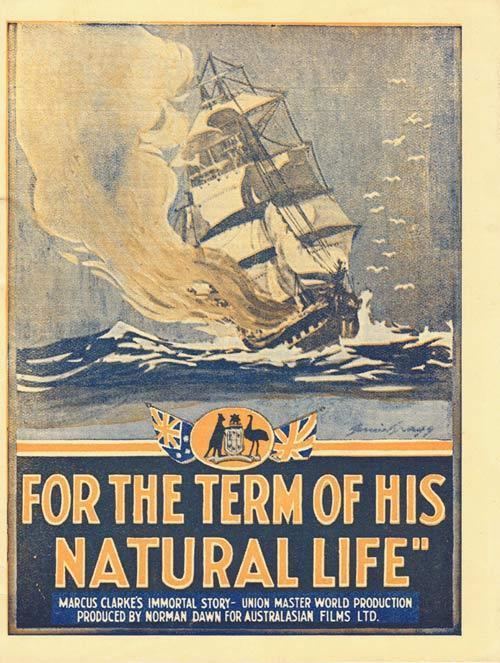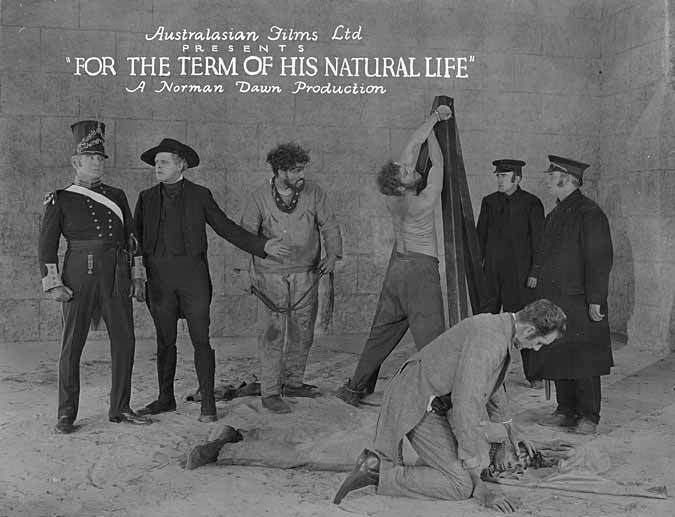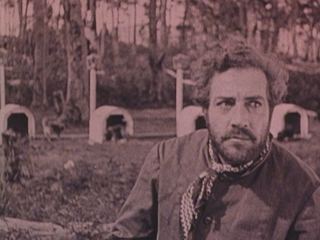For the Term of His Natural Life (1927 film)
6.8 /10 1 Votes
Duration Country Australia | 6.6/10 IMDb Genre Adventure, Romance Language English | |||||||||||||||||||||||||||||||||
 | ||||||||||||||||||||||||||||||||||
Release date 20 June 1927 (Australia)October 1927 (UK)4 June 1929 (USA) Similar movies Related Norman Dawn movies | ||||||||||||||||||||||||||||||||||
For the Term of His Natural Life is a 1927 Australian film, based on the novel by Marcus Clarke, directed, produced and co-wriiten by Norman Dawn. It was the most expensive Australian silent film ever made and remains one of the most famous Australian films of the silent era.
Contents
- For the term of his natural life trailer
- Plot summary
- Pre production
- Differences from novel
- Casting
- Shooting
- Release
- US release
- Restoration
- Port arthur convict tramway segment from for the term of his natural life 1927
- For the term of his natural life norman dawn 1929
- References

For the term of his natural life trailer
Plot summary

After a row, Ellinor Devine reveals to her husband Sir Richard that he is not actually the father of their son, also named Richard, but that he was fathered by her cousin, Lord Bellasis. Sir Richard throws his son out and storms off in a rage. Shortly afterwards, Richard Junior finds his biological father dead in the forest. Only the viewer and an unidentified witness know that Lord Bellasis has actually been killed by his own son, known as John Rex. However, it is Richard Devine who is found next to the body and arrested. Thinking that his father killed Bellasis, Richard wants to protect his mother's reputation and gives his name as Rufus Dawes.

The convict ship that brings Dawes to Tasmania also carries the new governor Vickers and his wife and his daughter Sylvia. The commander of the ship is a brutal man by the name of Maurice Frere. With the Vickers is a young girl, Sarah Purfoy, as a nurse to the child. However, she really is the fiancée of John Rex, convicted for forgery, and tries to help the convicts take the ship. The rebellion is led by a murderer named Gabbett. They fail when Dawes overhears their plans and manages to warn an officer while being brought to a quarantine room for the sick. Gabbett decides to claim that Dawes was the actual ringleader.

A few years later, Frere comes to visit Vickers and shows interest in Sylvia who has grown to be a beautiful young woman. Gabbett has come back after an escape and hints that he cannibalised his comrades to survive. Dawes, who is kept in solitary confinement on an island before the coast, attempts to drown himself. Frere has brought Vickers the order to give up the settlement and move to Port Arthur. Vickers embarks the convicts and sails with them. A smaller boat is supposed to carry Frere, Mrs Vickers and Sylvia, but is taken by John Rex, who maroons the three on the abandoned shore. There, Dawes finds them a few days later and manages to inspire them a new will to live. Sylvia especially takes to him very much and convinces him to make a boat, but Mrs Vickers dies before they can leave and makes Dawes promise to look after her daughter. The three survivors are found later by Vickers who has started to search for them. Frere takes the credit for saving Sylvia, who is herself unable to remember a thing after waking. Dawes is put back into prison.

Later again, it is shortly before the wedding of Sylvia and Frere. John Rex has been captured and Sarah Purfoy begs Frere to save his life by saying that he left them food and weapons. She threatens to reveal his past with some of the women in the settlement to Sylvia and Frere complies. Dawes, who also testifies, is shocked to find that Sylvia cannot remember him. He escapes on the night of the wedding to speak to Sylvia but is apprehended. The next day, a young convict named Cranky Brown is sentenced to a flogging for escape despite the protest of the reverend North and Dawes is ordered to carry out the punishment. He refuses to do so after Brown faints and his flogged himself. Upon finding that Brown is dead, Dawes curses Frere.

John Rex has planned another escape with the help of Gabbett. Dawes refuses to leave with them but asks Rex to post a letter for him. John Rex manages to escape with Sarah's help, while Gabbett and five other man get lost in the wilderness and Gabbett again starts killing and eating his comrades to survive. When he arrives at the shore, he is found by a group of sailors, who kill him. Rex reads Dawes letter in Sydney and understands his striking resemblance to Dawes, since they have the same father. He returns to England, where Ellinor Devine first accepts him as her son, but begins to suspect once he starts spending the family fortune. She confronts him with the fact that Richard was illegitimate, and Rex confesses to what happened.
Some years later again, Dawes is on Norfolk Island. Frere is on his way there to restore order. He quickly finds out that Dawes is the core of a rebellious "ring" whose members avenge every punishment through violence. The heavy punishments to which he sentences Dawes break him after some days. Reverend North becomes a close friend of Sylvia and when he visits Dawes in the hospital, the latter begs him to talk to Sylvia. Frere quickly learns about their friendship and after North infuriates him, he revenges it by punishing Dawes. One evening, he finds North and Sylvia in an embrace and suspects his wife to cheat on him. After he strikes her, Sylvia takes the next boat to the mainland; to her father. North goes to visit Dawes and confesses to him that he witnessed the murder of Lord Bellasis but did not tell anyone because Lord Bellasis held banknotes that North had forged. He gives Dawes his coat and tells him to go and see Sylvia. A storm breaks loose. The ship is about to sink as North frees the Norfolk Island convicts, who go after Frere. Sylvia recognises Dawes shortly before the ship sinks; at the same time, the convicts kill Frere. The next morning finds Dawes and Sylvia on a plank in calm waters.
Pre-production
The novel had previously been filmed in 1908 and 1911. Australasian Films had made five films since reactivating production in the mid 1920s but none of them had made much impact internationally. They thought a big budget version of the classic novel might prove popular with overseas as well as Australian audiences.
The project was originally budgeted at ₤15,000 to be directed by Raymond Longford and starring Frank Harvey. However Australasian wanted an American release, and accordingly hired an American director, Norman Dawn, and imported American stars. Australasian promised Longford work on other films, but soon allowed his contract to lapse.
Norman Dawn was in Australia to make a series of scenic shorts and was offered the job by William Gibson of Australasian. The budget was raised to £40,000.
During pre-production, questions were asked in the Commonwealth Parliament whether the film should be exported because it depicted Australia's convict past. Hollywood was making an increading number of films on location around this time such as Chang, The Trail of '98 and The Covered Wagon and For the Term of His Natural Life was grouped with these.
Differences from novel
Casting
Gibson claimed he tested Australian actors to play the leads but was unable to find people of sufficient quality. Accordingly, four main roles were given to Americans, Eva Novak, George Fisher, Steve Murphy and Katherine Dawn, who arrived in Australia in August 1926. The cast also included:
Shooting
Filming began on 10 August 1926. After some studio scenes shot at Australasian's Bondi studio, the unit shifted to Port Arthur and Macquarie Harbour. Great attempts were made to ensure the authenticity of sets and costumes with period costumes being borrowed from Hobart museum and duplicated.
In October, the unit returned to Sydney to film prison interiors at the studio. An old sailing ship, the Inca, had been reconditioned and was used for scenes in Sydney Harbour. The prison escape scene was shot on the banks of the Parramatta River near Ryde at a cost of £1,200 for one day's shooting. Other scenes were shot at the convict-built gaol at Berrima and Wombeyan Caves. Throughout production, a trio of musicians played mood music on the set to help the cast with their performances.
The budget eventually blew out to a reported ₤60,000. Some have even claimed it went as high as £70,000 although Stuart F. Doyle of Australasian put the official figure at £50,000.
Release
The movie was an enormous success at the Australian box office but did poorly overseas, in part due to the emergence of talking films in 1928.
US release
The presence of American stars and directors meant the film was publicized in the US but was not released there until 1929. It was estimated the combined losses of this film and Norman Dawn's follow-up, The Adorable Outcast (1928), came to ₤30,000. Cinesound Productions announced plans to remake it with sound in 1932 but this never seems have been seriously pursued.
Restoration
The movie was restored by Graham Shirley and screened at the 1981 Sydney Film Festival.
It was based primarily on an incomplete Australian release, comprising less than half of the original film; an American release, provided by the American Film Institute, consisting "almost entirely of variant takes and out-takes" which were usually of lesser quality; images reused in the 1933 Cinesound Productions travelogue Ghosts of Port Arthur; outtakes and stills from the National Film and Sound Archive; and new intertitles for the remaining gaps.
Port arthur convict tramway segment from for the term of his natural life 1927
For the term of his natural life norman dawn 1929
References
For the Term of His Natural Life (1927 film) WikipediaFor the Term of His Natural Life (1927 film) IMDb For the Term of His Natural Life (1927 film) themoviedb.org
